The big news from Scott Sports for 2019? The return of the Ransom – a model that first appeared in 2005 as a genre-bending All Mountain bike with a high-tech carbon fibre frame, 165mm of rear travel, and Scott’s own Equalizer shock. With its impressively low weight and remote-adjustable suspension, the versatile Ransom played a significant role in redefining riders’ expectations of what a long-travel mountain bike was capable of.
13 years after we were first introduced to the Ransom, it’s now back in the line, kicking out the Genius LT as the Swiss brand’s long-travel All Mountain / Enduro bike. It’s got a little more travel this time around, with 170mm of rock-devouring suspension front and rear. The wheels have grown too – the 900 Tuned model shown here is sporting 29er wheels with huge 2.6in wide Maxxis Minions. Thanks to a 2-position geometry chip on the upper shock mount though, the same chassis will accept 27.5+ wheels as well.
That sees the Ransom occupying a pretty slender slice of the MTB pie, since there aren’t too many bikes out there with those kinds of proportions. Even big-hitters like the Specialized Enduro, Trek Slash and Evil Wreckoning come up short of the Ransom’s monstrous 170mm of travel. Off the top of my head, only the Pivot Firebird 29 and the Whyte G-170 29 have the millimeters to match.
Of course the typical conundrum for a bike with this much tyre and this much travel is that it’ll surely be great for descending, but likely pretty boring everywhere else, and a total heffalump on the climbs. To address this, Scott has implemented its TwinLoc suspension system into the Ransom. Much like the original model, the rider has fingertip control of the fork and shock, with the ability to limit the rear travel to 120mm to boost its climbing abilities.
I’m plenty familiar with the TwinLoc system, having ridden and reviewed the Scott Spark RC last year. More recently, I’ve also finished off six months of testing with the Scott Genius 900 Tuned – a 150mm travel bike that shares a lot in common with the Ransom.
Though I got on well with the Genius, I did find some shortcomings with the spec. Scott appears to have addressed those with the Ransom though, which features a wider handlebar, more aggressive tyres, and a longer dropper post. And with the Ransom sharing a similar frame and suspension design, with an extra 20mm more travel at either end, I was intrigued to see how it would all play out on the trail.
Still, the Ransom had some convincing to do. More travel isn’t always a good thing, and I’m a personal subscriber to the quality over quantity brigade. I think a lot of riders out there are typically over-biked, and end up purchasing and riding much longer travel rigs than their usual trails demand. I call it the ‘SUV Effect’.
To work out who actually needs a 170mm travel 29er, I’ve been testing the 2019 Scott Ransom 900 Tuned for the past month to see just how effective that suspension system is, and whether there is such a thing as ‘too big’.
2019 Scott Ransom 900 Tuned Specifications
- Frame // HMX Carbon Fibre, 170mm Travel
- Fork // Fox 36 Float Factory FIT4, 170mm Travel w/3-Position TwinLoc Remote
- Shock // Fox NUDE TR EVOL w/3-Position TwinLoc Remote, 205x65mm
- Hubs // Syncros Revelstoke 1.5, 110x15mm Front & 148x12mm Rear
- Rims // Syncros Revelstoke 1.5, 28h, 30mm Internal Rim Width
- Tyres // Maxxis Minion DHF EXO 3C MaxxTerra 2.6in Wide
- Chainset // SRAM X01 Carbon Eagle GXP w/32t X-Sync 2 Chainring
- Rear Mech // SRAM X01 Eagle, 12-Speed
- Shifter // SRAM X01 Eagle, 12-Speed
- Cassette // SRAM X01 Eagle, 12-Speed, XG1295, 10-50t
- Brakes // SRAM Code RSC, 200mm Front & 180mm Rear Rotors
- Stem // Syncros Hixon iC Rise Carbon, 50mm Length
- Bar // Syncros Hixon iC Rise Carbon, 20mm Rise, 780mm Wide
- Grips // Syncros Pro Lock-On
- Seatpost // Fox Transfer, Kashima Coat, 31.6mm, 150mm Travel
- Saddle // Syncros Tofino 1.5, Titanium Rails
- Size Tested // Medium
- Sizes Available // Small, Medium, Large & X-Large
- Confirmed Weight // 13.12 kg (28.86 lbs)
- RRP // £6,999
The Bike
For 2019, there will be four spec options available for the Ransom, kicking off at £2,799 for the alloy-framed Ransom 930. There are four models available with 29in wheels (930, 920, 910 & 900 Tuned), while two models will come with 27.5in wheels as stock (720 and 700 Tuned). All models will accommodate either wheelsize.
Of course Scott sent us the top-end Ransom 900 Tuned model, which comes with an eye-watering price tag that’ll get you 1 quid change from seven grand. This is the flagship model though, and it’s packed with all sorts of gizmos and gadgets that Scott’s engineers have plenty to be excited about.
With the exception of the alloy rocker link, the frame is entirely crafted from carbon fibre – Scott’s HMX layup to be exact. It all looks very smooth and shapely, with a lowered top tube for additional standover clearance and clean lines from the rear dropouts up through the rocker link. Even with six cables coming off the handlebar, Scott has done well to route them discreetly. And thanks to the vertically-mounted rear shock, there’s clearance for a water bottle inside the compact mainframe.
Now it wouldn’t be a new Scott model without mention of an impressive frame weight. Including hardware and the rear shock, Scott claims this frame weighs just 2650g. For those playing at home, that’s over 400g lighter than the original Ransom frame, and only 400g heavier than the equivalent Genius frame.
One reason for the weight increase is the use of sealed cartridge bearings throughout (the Genius features bushings for most of its pivot points). Scott has retained the alloy pivot hardware though, which still annoyingly requires a T30 torx key – a rarity on most multi-tools, and something I found out on a ride when the upper shock mount loosened slightly.
By flipping the trunnion mounted rear shock, Scott has created a sturdy anchor point that integrates into the huge bottom bracket junction. The BB92 shell allows for more carbon to fill up the space between the X01 crankarms, while the chunky main pivot has been spaced as widely as possible to reduce flex through the back end.
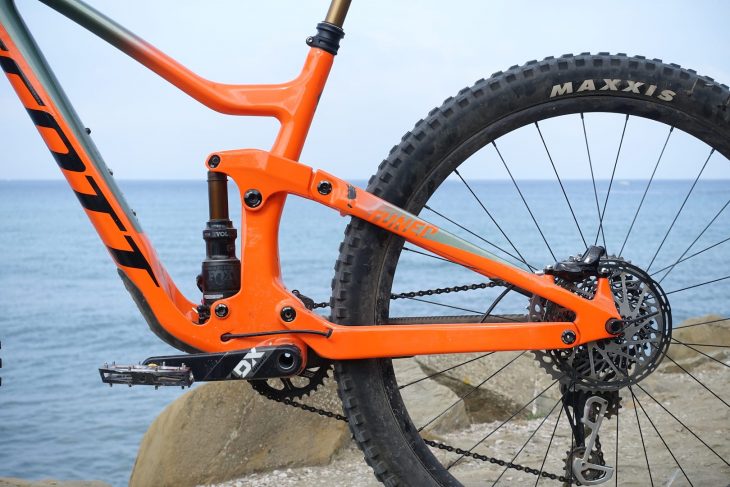
For the 900 Tuned model, you’re looking at a Fox Factory Series suspension package, including a 36 Float FIT4 fork on the front, and a custom Nude TR rear shock – built by Fox, designed by Scott. Both dampers are hooked up with cables to a newly refined TwinLoc handlebar remote, which allows you to click through Descend, Traction Control and Locked settings. More on how those work a little later.
Geometry wise, the Ransom isn’t all that different from the Genius. In the ‘Low’ geometry position, the head angle sits at 64.5° (half a degree slacker), and the seat angle is 75° (half a degree steeper). The 438mm chainstay length is identical, as is the 439mm reach measurement on our medium test bike. For more information about geometry, frame features and the suspension design, check out the Ransom news story here.
Enhancing the space-age look of the Ransom 900 Tuned is the striking Syncros Hixon iC SL handlebar, which integrates the stem into the one-piece carbon structure. Though it looks shorter, the virtual stem length is 50mm, and the bars measure 780mm tip-to-tip. If that’s still not wide enough for you, Syncros is making an 800mm version, though you’ll have to purchase that one separately.
More Syncros parts feature throughout, including the new Revelstoke 1.5 wheels. Intrigued by these new-to-me hoops, I whipped them off the bike and weighed them. 2030g for the set is the answer. The chunky alloy 6-bolt hubs come with sealed cartridge bearings and a 6-pawl freehub mechanism that provides 78 engagement points for buzzing down the trail. The wheels are built with butted straight-pull spokes and shallow-depth tubeless ready rims.
For the 900 Tuned model, SRAM has provided its excellent X01 Eagle 1×12 drivetrain, along with powerful quad-piston Code RSC stoppers. Completing the bling-fest, a Kashima-coated Fox Transfer dropper post comes with 150mm of stroke on all sizes, except for the Small that comes with a 125mm dropper.
Setting Up
Suspension setup on the Ransom took me a few rides to dial in, since the recommendations on the back of the Fox 36 fork were significantly off. At 72 psi, the fork was miles too stiff for my 70kg riding weight. Initially suspecting this was due to there being too many volume spacers in the air spring, I opened up the fork to find that there were actually none. Air pressure was the culprit then, so I steadily dropped the pressure down each ride until I had it right. 56 psi was the winning number, providing me with around 28% static sag when standing up on the pedals.
To keep the fork level on steep switchback corners, I dialled in the low-speed compression damping around halfway with 10-12 clicks, and set the rebound on the slower side with 6 clicks off fully closed.
The rear shock on the Ransom is brand new for 2019, and features a huge air canister and a big 65mm stroke. Scott recommends setting sag at 30%, which you need to do in the fully open Descend mode. I started with 180 psi, though ended up lowering that to 170 psi so I could squeeze out a little more of the travel. Rebound was set one click slower than halfway.
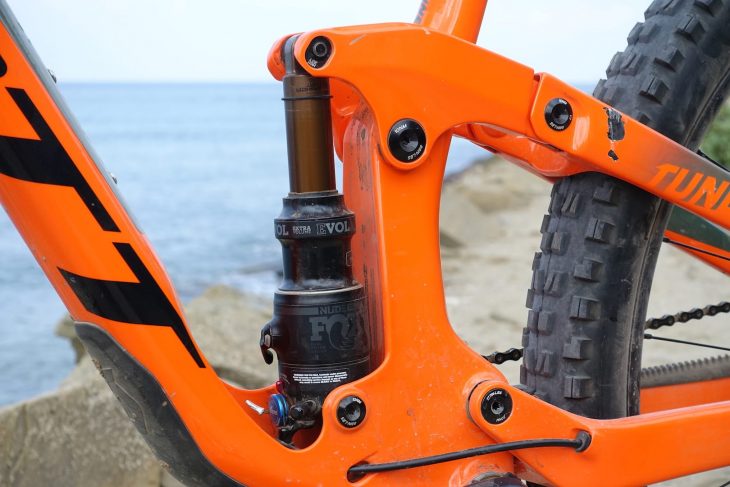
Scott has spec’d big volume Maxxis rubber for the Ransom, with 2.6in wide Minion DHFs front and rear. Both tyres on our pre-production test bike feature a supple 120tpi casing with EXO sidewalls, and weighed in at 1030g each. However, production models will come with an EXO+ rear tyre that will be a little heavier, but also tougher thanks to a reinforcing Silk Shield casing. On the note of rubber, Scott recommends running the Genius with either 2.4-2.6in tyres with the 29er setup or 2.6-2.8in tyres with the 27.5in setup. This is to keep the ride height consistent.
Both tyres initially setup tubeless without hassle, and I ran them at 16 psi on the front and 18 psi on the rear. Knowing I’d be riding in places like Finale Ligure, Lake Garda and Punta Ala during the test period, I fitted a Vittoria AirLiner inside the rear wheel to add some rim and tyre protection for inelegantly smashing down rocky Italian riviera singletrack.
Punta Ala Punishment
Already I’ve had the chance to ride the Ransom in quite a variety of locations during a two-month road trip around Europe. I had a few days in Lake Garda riding with my good friend Zili from MtbCult.it, and he was kind enough to help me out with shooting some photos of me on the Ransom. Following our Garda stop, most of my testing time was spent in Punta Ala in Tuscany, which is located around a 1.5-hour drive down the coast from Pisa. The site of the first Enduro World Series event in 2013, Punta Ala is home to a lucrative network of natural singletrack that includes some properly arse-puckering downhill trails. Along with its dry, loose and rocky trail surfaces, Punta Ala proved to be an ideal environment for tyre and suspension testing on the Ransom.
As well as using the local shuttle service at the Punta Ala Trail Centre, I also spent plenty of time doing pedal-powered trail riding to see how efficient the Ransom was, and also to see how rideable it could be on more mellow singletrack. For those interested in checking the area out (I can highly recommend it) we stayed at the PuntAla Camp & Resort, where we camped right next to the beach. It’s a neat spot. If you want more info, head here.
The Ride
With the Genius still fresh in my mind, it took no time at all to settle into the Ransom’s riding position. The cockpit feels familiar thanks to an identical reach measurement, though due to the steeper seat angle, it is ever-so-slightly shorter while pedalling at full mast.
The new Syncros Tofino saddle deserves a mention here for being a particularly comfy perch, and it is a marked improvement over the XM saddle on the Genius. I also really like the shape and sweep of the Hixon handlebar too, which has a lovely degree of vibration damping. Nope, you can’t adjust the roll of the bar like you can with a regular bar/stem setup, but the grips fit so well in the hand that I never felt the need to.
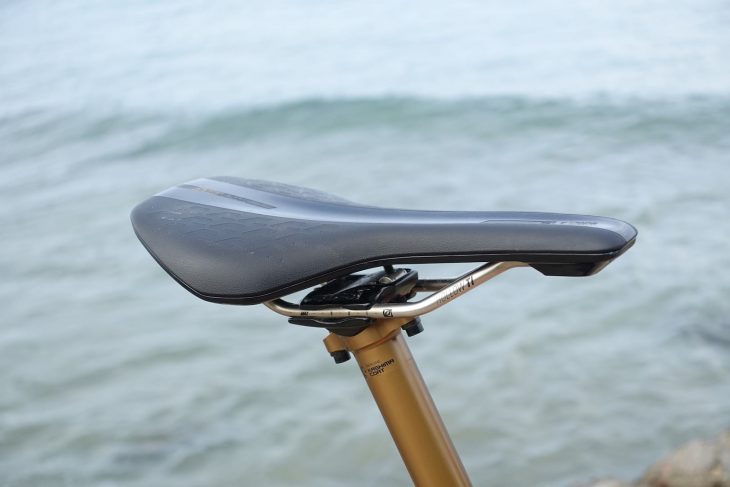
Even though the bar has 20mm of rise through it, the front end doesn’t feel jacked up to the sky. In fact, I already have the stem at the top of the steerer tube, and I wouldn’t want the grips to be any lower than that. Because the Ransom has a very stubby head tube and a low-profile integrated headset, it ends up with a short 613mm stack height. That is deceivingly low for a 29er that has a 170mm fork hanging off the front of it, and it contributes to the Ransom’s trail-friendly riding position and handling.
Before arriving in Punta Ala, our road trip took us through the Alps in Austria and northern Italy, where I was able to test the Ransom’s climbing abilities and overall comfort on several big alpine loops up in the mountains. With solid 1-2 hour climbs on a mixture of tarmac and dirt fireroads, I certainly got plenty of use out of the TwinLoc remote. I’m not normally a fan of remote lockouts and the added cables they bring, but having the ability to turn a 170mm travel big rig into a nearly rigid bike at the flick of a lever meant I used it regularly. This saved energy on those big road climbs, and meant I’d arrive at the top feeling fresher for the descent back down.
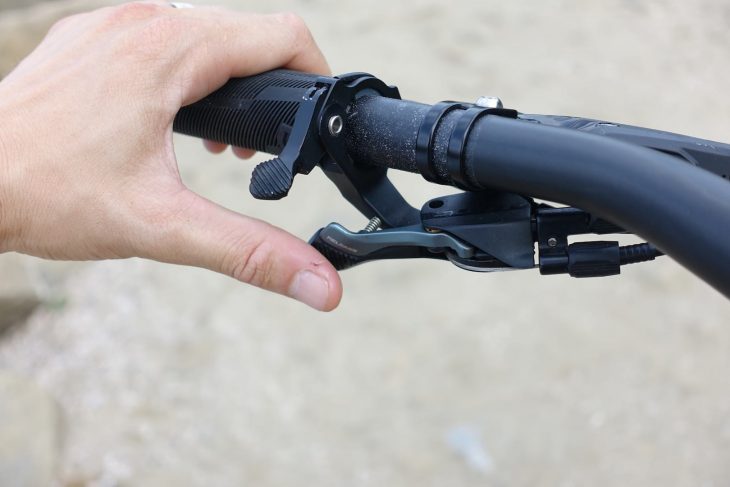
Really though, it’s the Traction Control mode that is most useful on the Ransom. In this middle setting, one of the main air chambers inside the Nude TR shock is sealed off, which shrinks the effective air volume to create a much more progressive spring curve. The suspension ends up being so progressive that it actually limits travel to 120mm. The compression damping is also firmed up a touch, and that gives the Ransom a noticeably springier feel with a more pert pedalling platform. At the same time, the fork’s low-speed compression damping is also increased.
As well as improving efficiency, the Traction Control setting also changes the bike’s dynamic geometry by lifting the BB height by 9mm and steepening the head and seat angles by 0.7°, putting you in a better position for climbing. However, the steeper the incline, the more dramatic the difference in geometry compared to climbing in the open Descend mode. On a 15% uphill slope, Scott claims the BB sits 20mm higher, and the angles steepen by 1.5°.
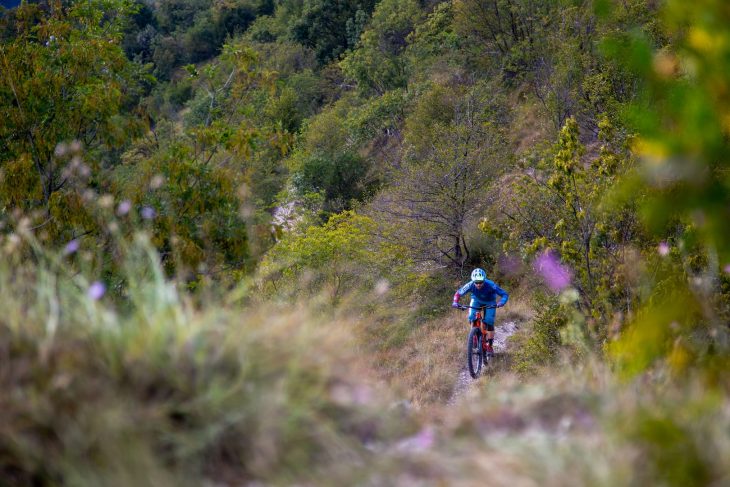
This is particularly noticeable on technical climbs lathered in roots and rocks, where pedal clearance comes into play. The extra space between the crankarms and the ground meant I could clean sections of trail that left me bashing pedals in Descend mode.
Even in the shorter travel Traction Control mode though, the suspension remains sufficiently active for bumps to be absorbed pretty smoothly. Along with the high volume Maxxis tyres, the Ransom delivers a load of usable traction to prevent you from spinning out and stalling. I never expected to say that a 170mm travel 29er climbs well, but…err…the Ransom climbs well.
My only qualm is with the kinked seat tube, which has the effect of pulling the saddle backwards as it’s extended out of the frame. The saddle height on the medium-sized Ransom is bob-on for me, with the collar of the Fox Transfer post slammed down as far as it will go. However, riders with longer legs that need more seatpost extension will end up with a slacker effective seat angle, which may or may not be a problem. Given I still have the saddle pushed forward on the rails, I’d say Scott could have gone steeper on the seat angle.
Once turned around at the top of the mountain, the Ransom’s self-shuttling proficiency begins to make sense. Flick the TwinLoc lever into Descend mode, and all of a sudden you have 340mm of combined suspension travel waiting to suck up everything in its path.
The two Fox dampers play well together, providing a similar feel to vertical wheel movement at the front and back. The 36 Float is already a well proven performer that I don’t need to elaborate on. The chassis is plenty stiff, the adjustments are easy to understand, and the damping is consistent. It isn’t as glue-like as the newer GRIP 2 damper though, so that may be an upgrade some will want to consider.
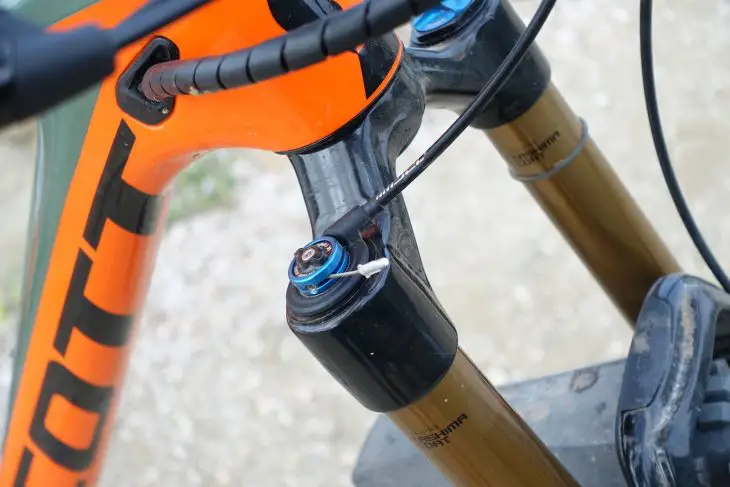
Out back, the Fox Nude shock is supple and effective on the rough stuff. Scott has tuned the Ransom’s suspension kinematics with a slightly lower anti-squat value compared to the Genius, which trades some pedal efficiency for a more active feel throughout the travel. It still pedals well even in Descend mode – and certainly a lot better than many of the Ransom’s competitors – but the suspension is more free to move overall.
Likewise, the shock’s big air volume has been tuned to deliver as much coil-like performance as possible, with the four-bar linkage delivering an average leverage ratio of 2.61:1. The leverage rate does ramp up towards the end though, and that means the Ransom will play nice with coil shocks. And with more space surrounding the shock body and the frame, there’s also clearance to run a piggyback shock – air or coil – depending on rider preference.
There’s further tuneability to be had with the stock shock though. This being the Nude TR shock, there’s an additional lever on the shock body called Ramp Control, which offers Linear and Progressive settings. Controlling a third air chamber that wraps around the main air can, the Ramp Control lever either opens or closes this air chamber, altering the volume in Descend mode. It’s basically like opening up the air can and fitting a volume spacer inside (which you can still also do with this shock by the way). According to Scott, small-bump sensitivity remains similar between the two settings, but the Progressive setting provides a little more mid-stroke support, and requires 50% more force to bottom-out. That’s significant, and as a result, you’ll need to add 1-2 clicks of rebound damping when changing to the Progressive setting.
Personally? I tried the Progressive setting, but found little need for it. I really like the suspension feel in the Linear setting, and being on the lighter side with a smooth(ish) riding style, I never managed to bottom out the suspension anyway. I used full travel plenty of times, but it was never with an unsavoury ‘crunch’ at the end.
Really, the Progressive setting is mainly for jumpy riders like Brendog, who are hitting doubles, berms and huge drop-offs at a bikepark. The fact that you can alter the spring curve with a lever is neat though, and for riders who split their time between riding natural alpine trails and smoother high-speed jump lines, the adjustability will be useful. With the addition of an MRP Ramp Control cartridge on the fork, you’d have a very adaptable setup.
Suspension doo-hickies aside, the biggest trait that comes through in the Ransom’s ride quality is its manageability. It’s an easy bike to handle, which I didn’t expect given its size. Normally an aggressive long travel bike requires a lot of commitment and skill to get the most out of it, but not so with the Ransom.
It corners well, and I found it easy to lift up the front wheel off of drops and over root sections. The stiff carbon frame and low overall weight certainly help, but Scott has built the Ransom with a tidy 438mm rear centre that also contributes to the bike’s nimbleness through the turns. With the saddle dropped down all the way, the low-slung top tube makes it easy to move about on and lean the bike down heavily onto those big cornering blocks on the Minion tyres.
One aspect of the Ransom’s handling that was apparent from the very first ride was the shorter 44mm fork offset. Although I’d missed the UK press launch at Revolution Bike Park, and hadn’t had a chance to look at any of the bike’s specs or geometry numbers in the presentation notes, I knew straight away that the offset was shorter than the Genius’ 51mm fork. In comparison to the Genius, the steering is noticeably slower and more steady on the Ransom. With a greater amount of trail, the steering feels more damped, particularly when the trail gets steep and twisty. On intimidating alpine switchbacks, the Ransom feels calmer and more confident, with less chance of the front wheel tucking under.
Because of the slack 64.5° head angle, you do need to learn to push more of your weight through the front tyre though. But it’s not as dramatic as some of the uber-long bikes out there.
Combined with the big tyre contact patch and substantial 1216mm wheelbase, the Ransom is as stable as you’d expect of such a big bike. It doesn’t necessarily ‘feel’ fast, but it simply smokes down rough and technical singletrack with less drama in the first place. I ended up hitting bigger drops and jumps than I’d attempt on the Genius, since it all seems very doable aboard the big Ransom.
However, I wouldn’t say the Ransom feels quite as unflappable as the Pivot Firebird 29, which was the last big 29er I tested. The Firebird 29 does have a heavier and burlier carbon frame though, and with a longer more reach – 455mm on the Medium – it’s bias is definitely more towards descending. I guess Scott could have built the Ransom with a longer front centre, but then as it is, this is a very good all-rounder.
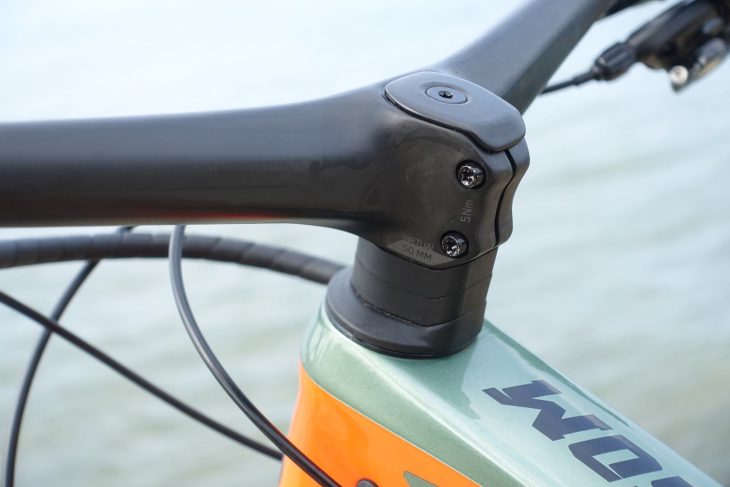
Component Notes
Scott has done a sterling job spec’ing out the Ransom, and there is very little on here that I’d change if it were my bike.
The Hixon bar may have polarising looks, but I think it looks mint and the shape and feel is great. You’ll want to make sure you check those stem bolts though – I had the bar twist on me once, and also with the Genius 900 Tuned, so make sure you use a torque wrench and add a little bit of carbon grip past on the alloy steerer tube.
The Code RSC brakes have been absolutely superb, with very good modulation give how much power is available. I did bleed the front brake after the first couple of rides, which is an easy thing to do – as long as you have the specific Bleeding Edge insert for the calliper syringe. Otherwise I got on well with these stoppers, which also won our most recent disc brake group test.
Maxxis Minion DHFs are well-loved for their combination of cornering grip, rolling resistance and versatility, and I found them to be a great match for the Ransom. For the loose and rocky trails around Punta Ala and Finale Ligure, I was never left wanting for more grip. They aren’t a great wet condition tyre though, and the 120tpi casing is on the lighter side. A change to a Double Defence casing and some toothier rubber will be a worthwhile upgrade for UK enduro racers.
Though I had no problems with the solid Syncros wheelset, the round straight-pull spokes aren’t as common to replace as standard J-bend spokes, and a specific tool is required to hold the spoke while truing and tensioning the nipples. I can also envisage some potential customers questioning the value of an in-house alloy wheelset on a bike costing seven G’s.
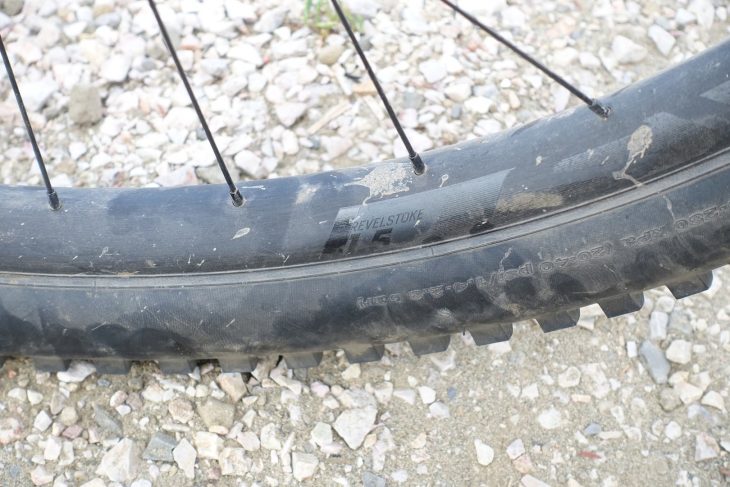
As usual, the X01 Eagle drivetrain performed reliably, and I never once dropped a chain. This is good, since there are no ISCG tabs on the Ransom frame, so your only chain security is the lightweight upper guide.
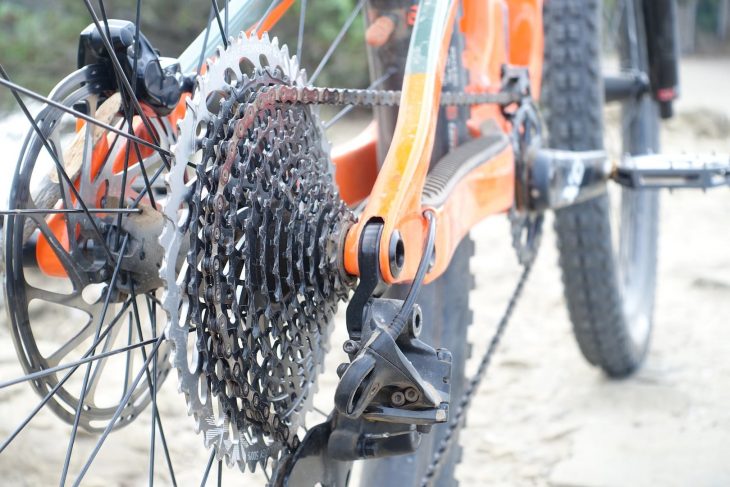
The updated TwinLoc remote deserves a mention, as the paddles now feature a rounder profile and machined traction grooves that are much nicer to operate. The main clamp bolt for the whole assembly is now in a much more sensible location, which makes adjusting the angle of the dropper lever and TwinLoc paddles a lot easier.
Three Things That Could Be Improved
- A steeper or straight seat tube: Scott went conservative on the seat angle, and the kinked tube means the effective seat angle gets slacker as you extend the post
- Pivot hardware: I find torx hardware annoying at the best of times, but the T30 pivot bolts are a total pain
- Wheels: Though I had no issues with them, the straight-pull spokes are more of a faff, and some customers may perceive the stock hoops to be a little low-rent on such an expensive bike
Three Things I Loved
- The approachable handling: the Ransom is steady and confident to ride, but it’s also very manageable on less-gnarly trails
- Traction Control: This is a turbo charger for the Ransom’s pedalling manners, and it’s largely responsible for the impressive all-round versatility
- High traction rubber: the big volume Maxxis tyres offer fantastic grip and comfort on rough and rocky terrain
Overall
Much like the original Ransom, the new version successfully pairs together a load of suspension travel with a classy and lightweight carbon frame. With the TwinLoc system offering fingertip-control of that suspension, the Ransom has genuine uphill performance that extends its versatility well beyond what I expected of such a big travel bike.
So, who is this bike made for? Well, the Ransom is no doubt a superb enduro bike. It may be heavier than the Genius, but it’s a better descender, and that will be appealing to serious racers. For competition stages that feature a good amount of pedalling, the TwinLoc system is also a very handy tool for boosting efficiency.
Though it is a confident descender, it’s worth noting that this isn’t a hooligan bike. It isn’t only made for smashing downhill laps at a bikepark, and it doesn’t require a World Cup downhill track to come alive. No, this is a proper all-rounder. A bike that relishes in being pedalled up long mountain climbs to access rough, natural, alpine singletrack. The Ransom is a self-shuttler that laughs at mechanical assistance.
Given its alpine credentials, is it too much bike for UK riding? I don’t actually think so. If you frequent technical trails like those in the Lake District, the Tweed Valley and around Snowdon, then the Ransom is ideal for that sort of big mountain riding. And when it climbs so well and is still fun to ride on ‘normal’ trails, why not have that extra travel to enjoy on the way down?
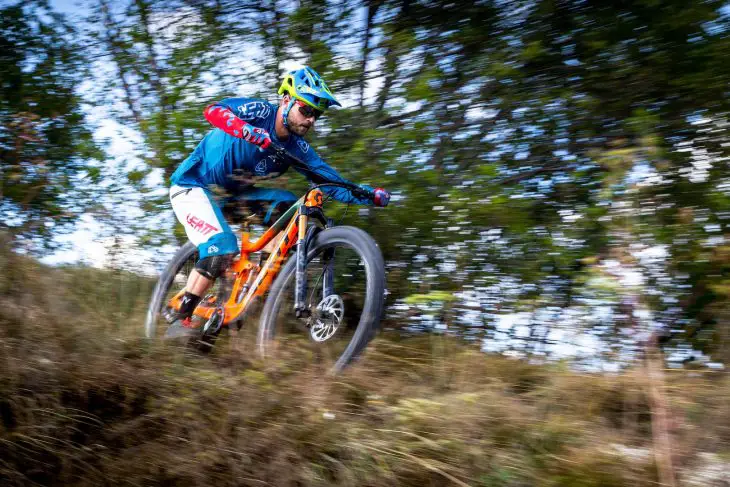
Review Info
| Brand: | Scott Sports |
| Product: | Ransom 900 Tuned |
| From: | Scott Sports, scott-sports.com |
| Price: | £6,999 |
| Tested: | by Wil Barrett for 1 month |
Comments (4)
Leave Reply
Post Comment

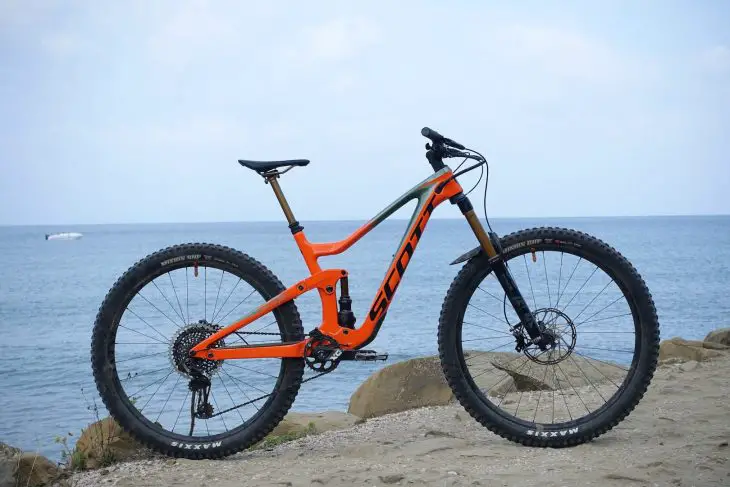
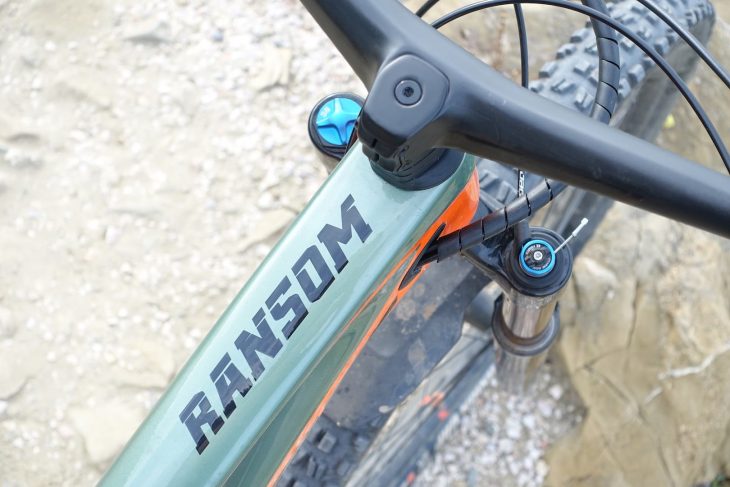
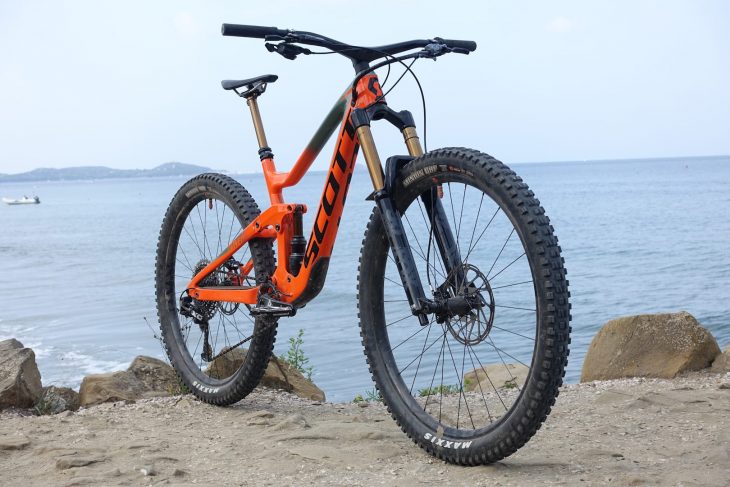
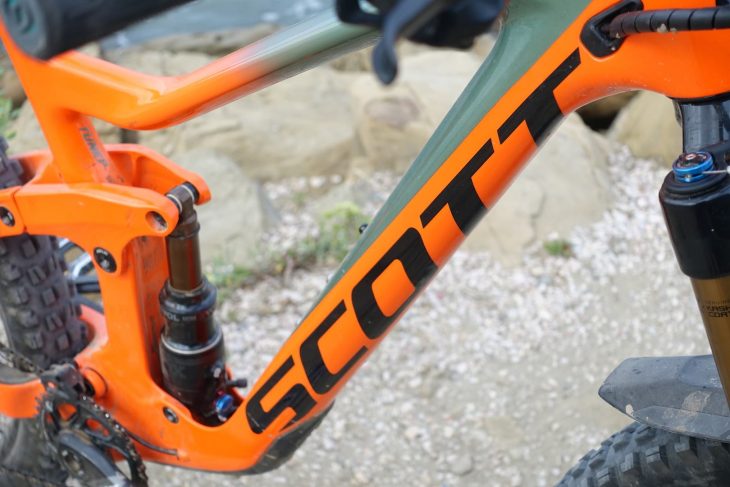

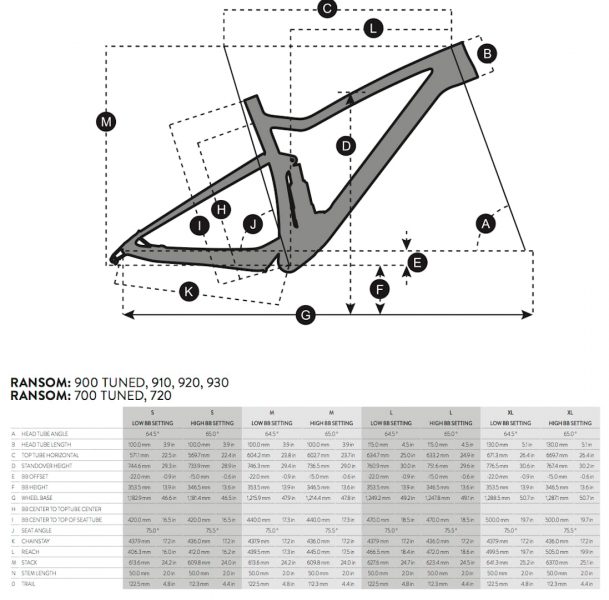
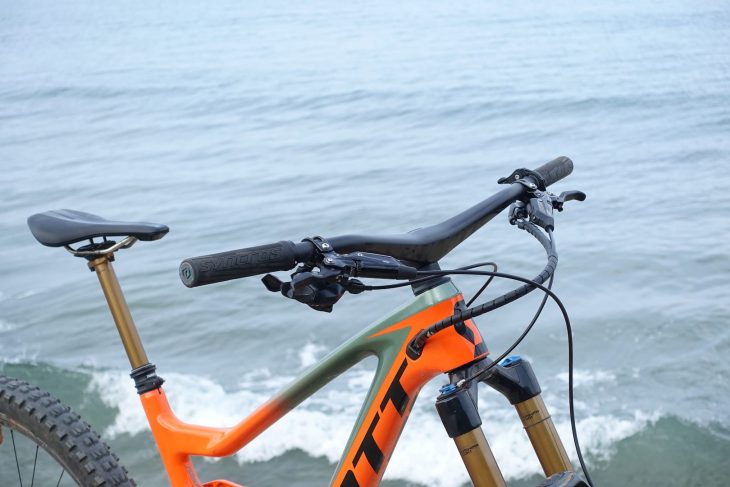
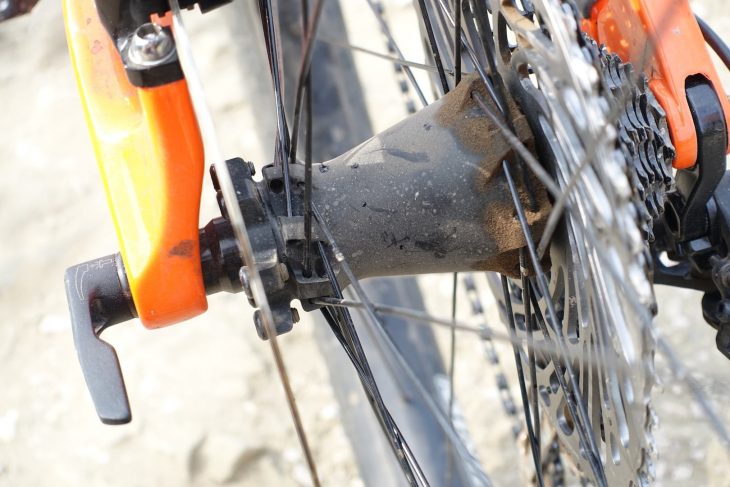
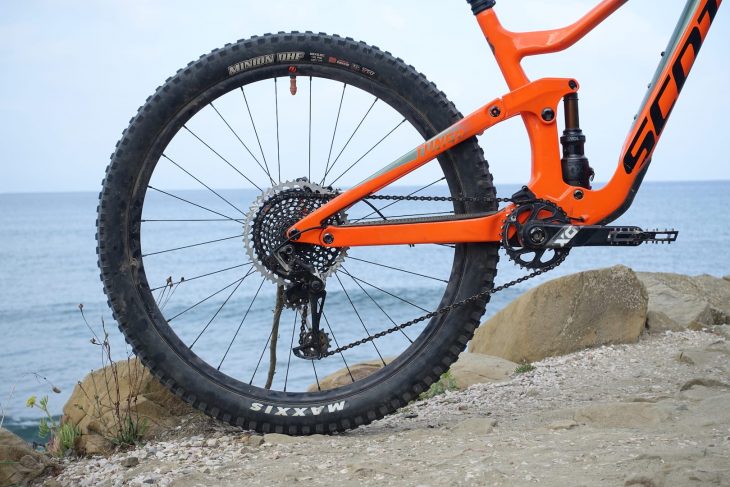
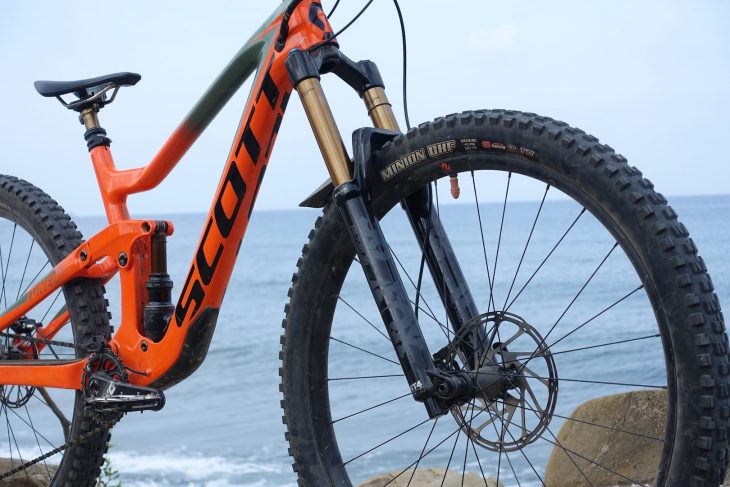
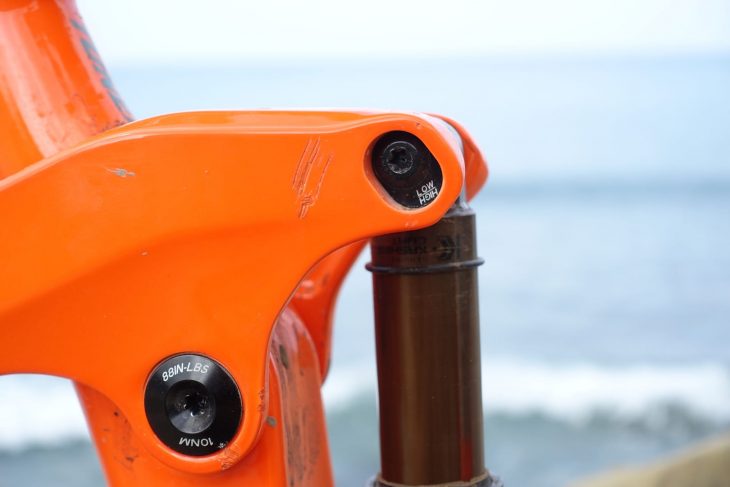
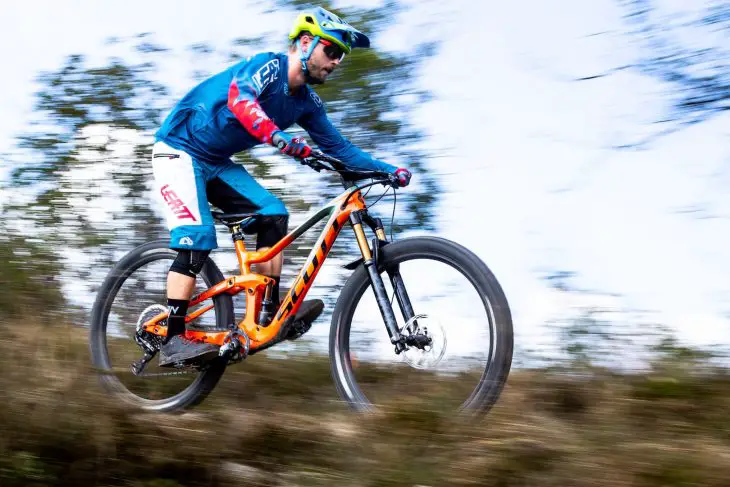
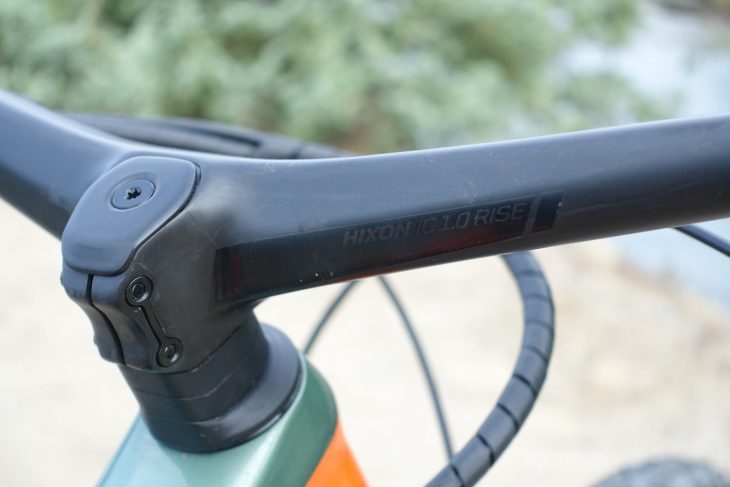
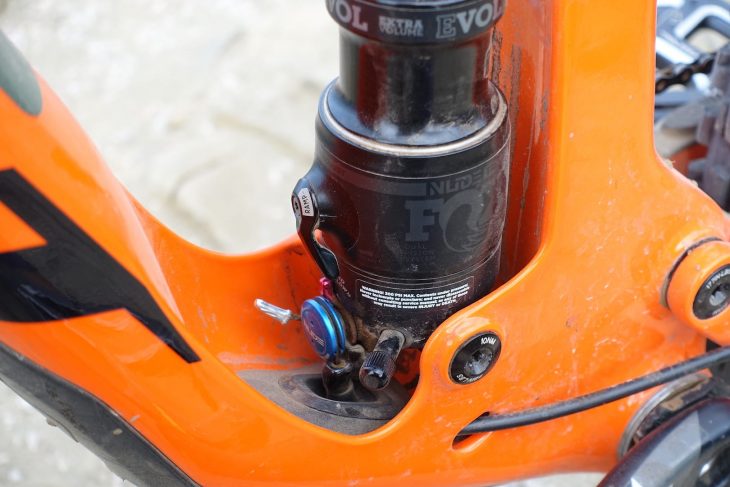
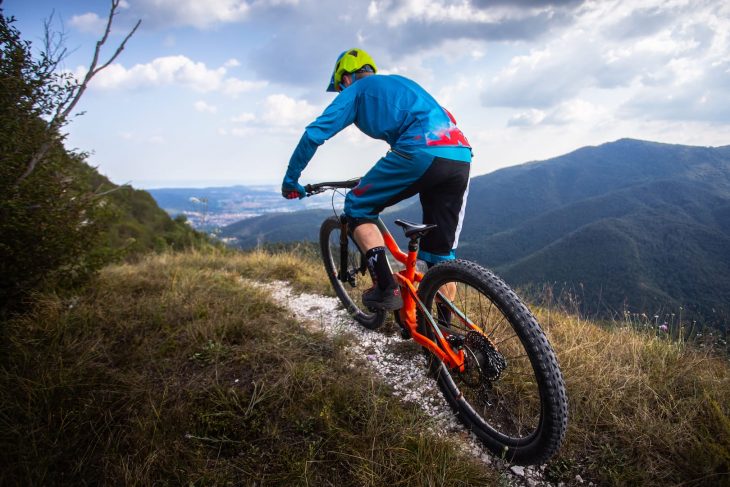
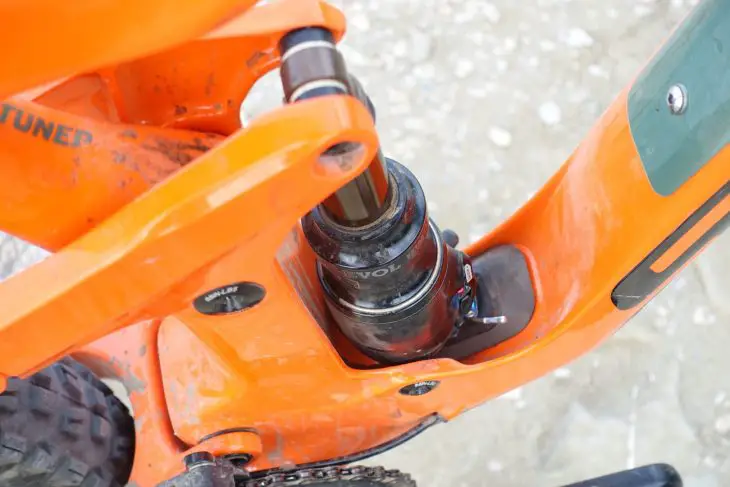
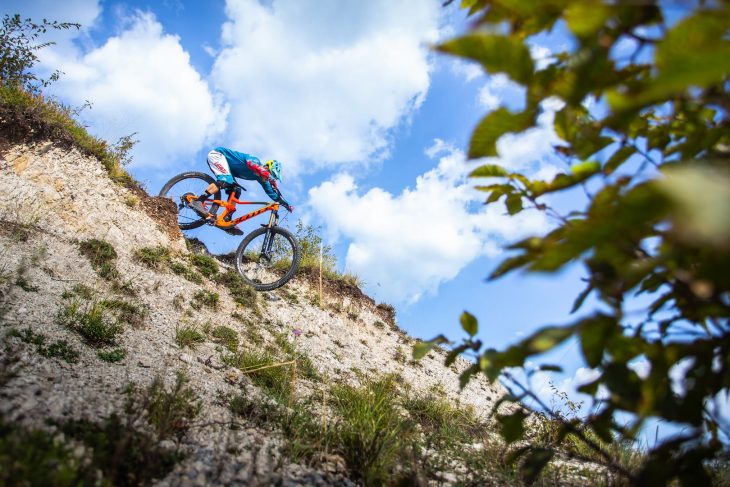

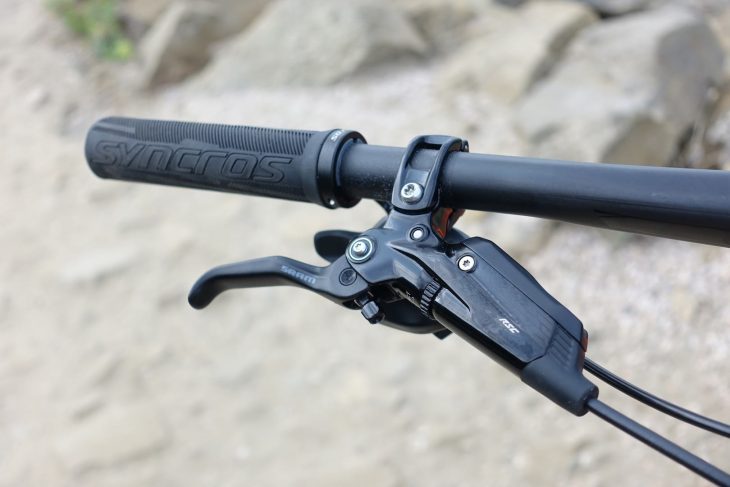
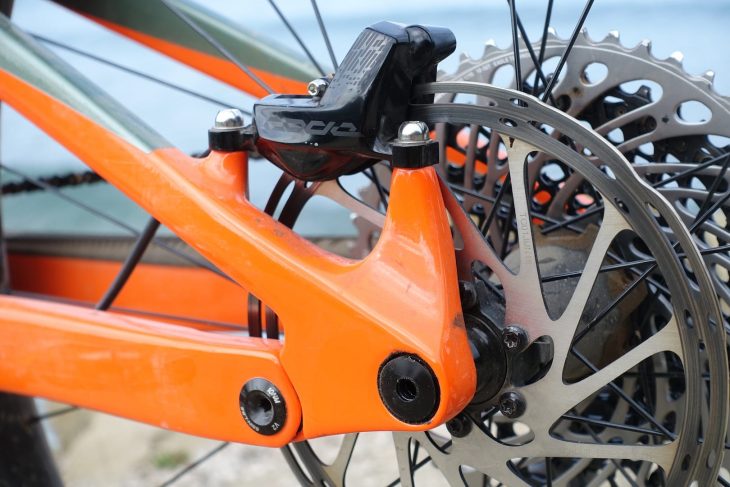
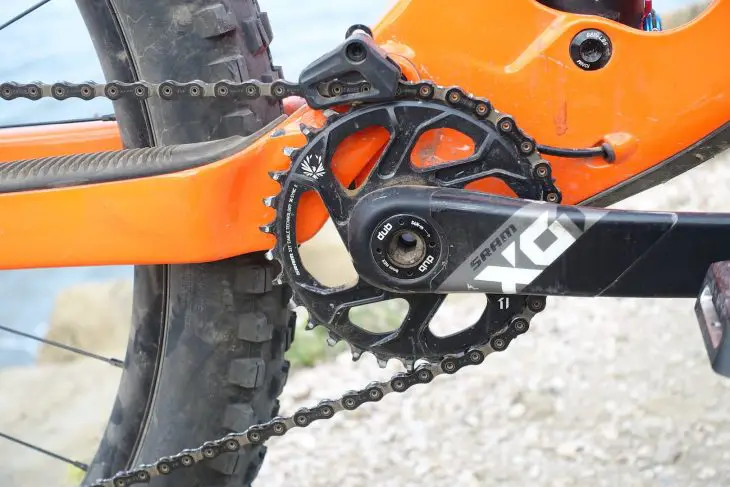
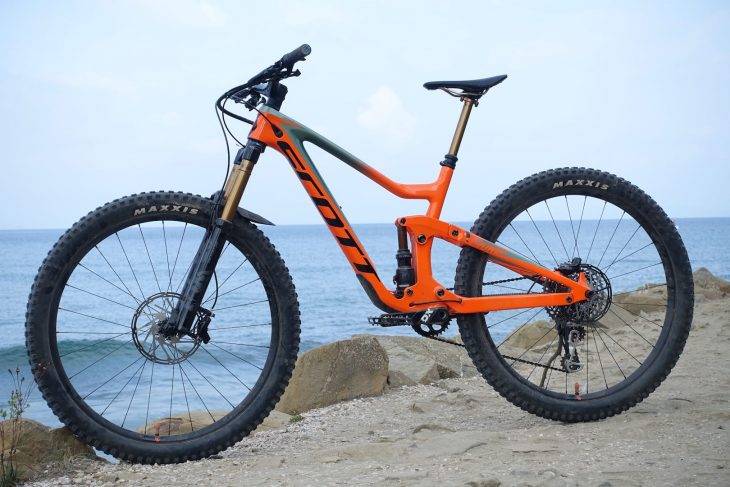
Nice write up! Missing a hyperlink “check out the Ransom news story here.”
@footflaps – Thank you for the kind words, and for the head’s up on the hyperlink! Now added to both stories.
ST Wil.
Nice review, Wil! By saying the Ransom doesn’t feel quite as unflappable as the Pivot Firebird 29, are you pinpointing just the front center length or you also feel the suspension is not as capable as on the Pivot? I am currently deciding between these exact two bikes (had a chance to test ride only the Pivot) and with my 6’3″ height I am definitely going for XL size. And in this size, Ransom is longer than Firebird 29 basically everywhere – reach, chainstay and wheelbase – with slightly slacker head tube angle on top. That seems like even bigger downhill bomber that Pivot on the paper.
@svobodarider – Cheers for reading and for the feedback!
I think the ‘unflappableness’ comes down to a few factors. The Firebird 29 has a really beefy carbon frame, which to me felt super stiff – particularly through the front end of the bike. In the Medium size, it is a touch longer in the reach, which I noticed.
As for suspension, the Firebird 29 I tested also had a Fox Float 36 GRIP2 fork and a Float X2 shock on it, so both the front and rear suspension were incredibly well-damped with exceptional high-speed control.
The Nude TR shock on the Ransom did perform very well throughout testing, and so did the FIT4 fork, but they’re not as glue-like as the dampers on the Firebird 29. The faster and more chattery the descent, the more you can feel the difference there. That said, I was able to ride some absolutely terrifying trails on the Ransom, and felt thoroughly confident and capable doing so.
The big trick up the Ransom’s sleeve is the TwinLoc system, which gives it a huge injection of versatility. It really does optimise the suspension between climbing and descending, and I think that makes the Ransom a true all-rounder. Certainly on less gnar trails and for technical climbing, the Ransom is the better bike of the two.
Hope that helps!
[ST Wil]